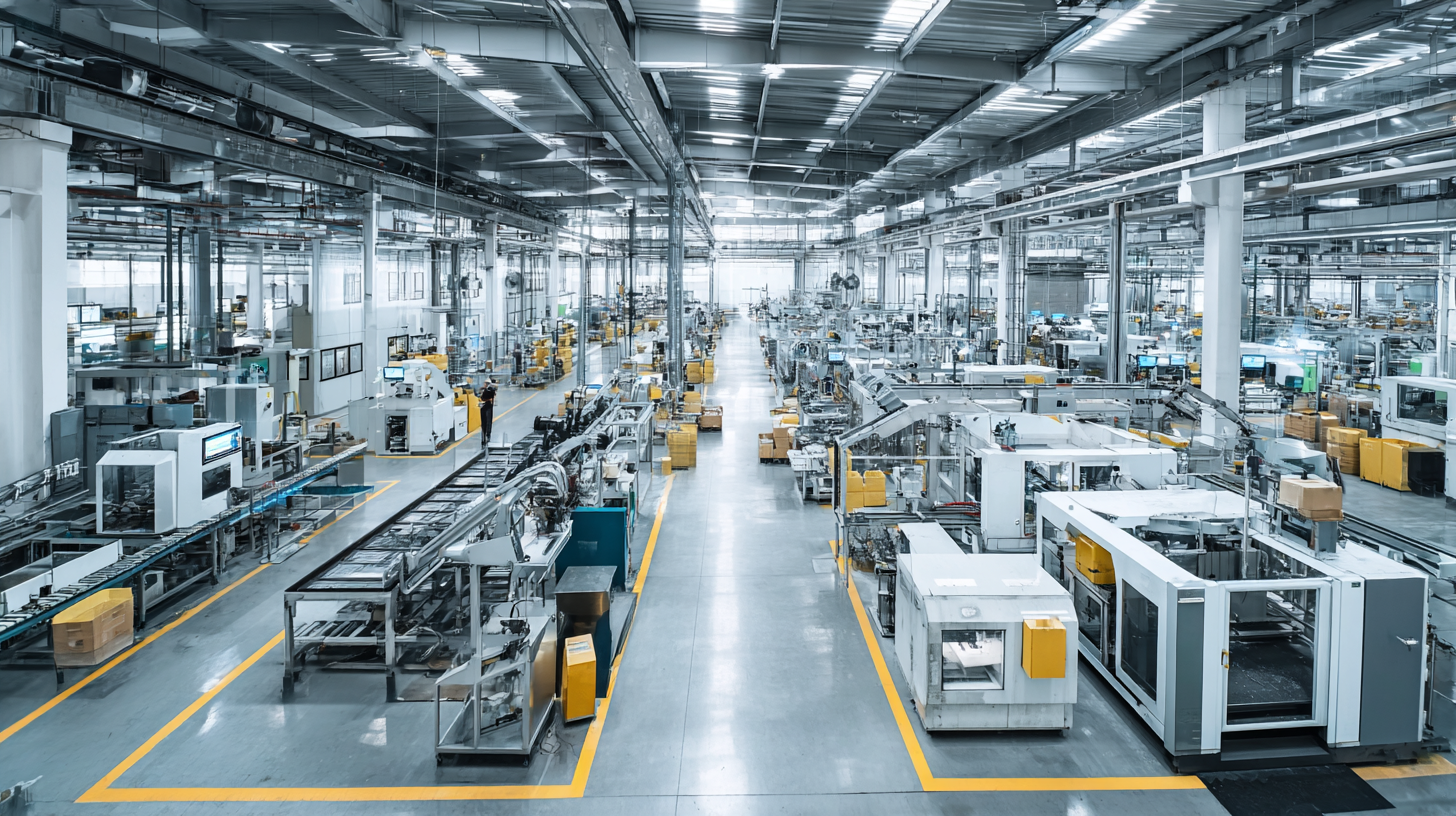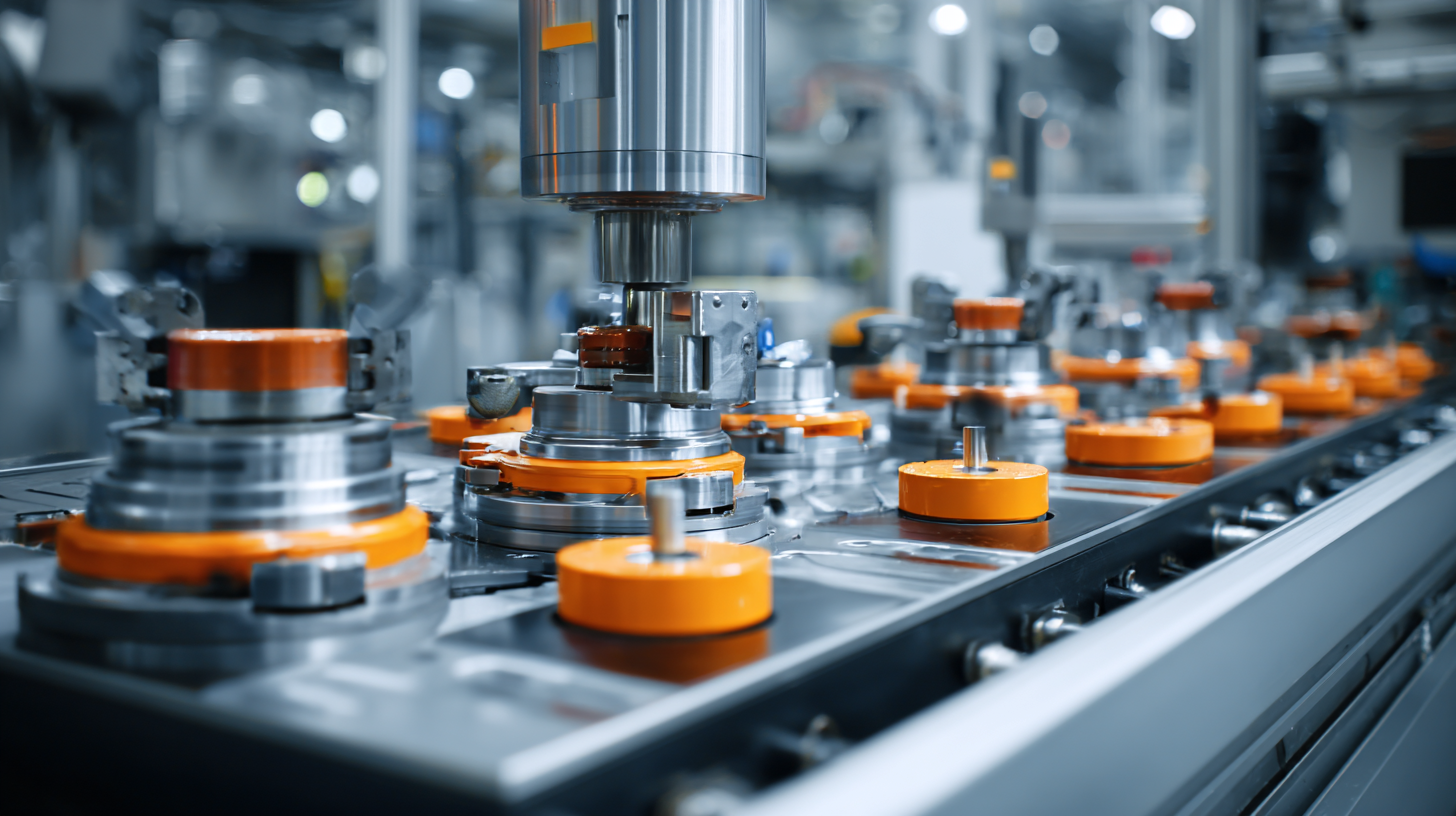In the ever-evolving landscape of industrial production, the implementation of manufacturing process control systems has emerged as a game-changer, driving efficiency gains of over 30% in various sectors. According to a recent study by MarketsandMarkets, the global market for manufacturing process control systems is projected to reach $23.5 billion by 2025, fueled by the growing demand for automation and precision in production processes.

These advanced systems utilize real-time data analytics, predictive maintenance, and process optimization tools to streamline operations, reduce waste, and enhance product quality. Industry leaders, such as Siemens and Honeywell, have reported significant improvements in operational efficiency and cost reduction through the adoption of these technologies.
As manufacturers strive to remain competitive in a global economy, investing in robust manufacturing process control systems is no longer an option but a necessity for achieving sustainable growth and operational excellence.
The integration of digital tools in manufacturing has become a game-changer for process control systems, significantly enhancing efficiency. By implementing advanced software solutions and IoT devices, manufacturers can obtain real-time data on production metrics. This access to information allows for immediate adjustments, reducing waste and optimizing resource allocation. Digital dashboards provide visibility into various stages of production, empowering managers to make informed decisions that streamline workflows and drive productivity.

Moreover, artificial intelligence and machine learning algorithms are increasingly being utilized to predict potential bottlenecks and maintenance needs. This predictive analysis not only minimizes downtime but also enhances overall system reliability. As manufacturers leverage these digital tools, they achieve a remarkable improvement in process control. By operating with greater precision and responsiveness, companies can disrupt traditional production methodologies, leading to over 30% improvements in output efficiency. The digital transformation of manufacturing is no longer a distant goal but a current reality reshaping the industry.
The integration of Internet of Things (IoT) technologies into manufacturing processes is driving a significant transformation in production efficiency. By utilizing connected devices and sensors, manufacturers can monitor and analyze real-time data, which enables them to optimize their operations. Reports indicate that the global IoT manufacturing market is projected to grow substantially, reaching an estimated valuation of $673.95 billion by 2032. This growth reflects a broad adoption of IoT solutions aimed at enhancing productivity and reducing operational costs.
Industries are increasingly recognizing the potential of IoT to transform traditional production methods into smart factories. For instance, companies are implementing digital twin technologies to create virtual replicas of physical assets, which allows for precise monitoring and predictive maintenance. Furthermore, initiatives such as the establishment of "digital lighthouse factories" exemplify the commitment to harness digital capabilities for improved decision-making and resource management. This shift towards digitalization not only streamlines production processes but also contributes to sustainable practices by minimizing waste and enhancing energy efficiency.
 In today's highly competitive manufacturing environment, data-driven decision making is crucial for optimizing production efficiency. Real-time analytics plays a pivotal role in this transformation by providing manufacturers with immediate insights into their operational processes. By leveraging data collected from various stages of production, manufacturers can identify bottlenecks, monitor machinery performance, and predict maintenance needs, ultimately driving productivity increases of over 30%.
In today's highly competitive manufacturing environment, data-driven decision making is crucial for optimizing production efficiency. Real-time analytics plays a pivotal role in this transformation by providing manufacturers with immediate insights into their operational processes. By leveraging data collected from various stages of production, manufacturers can identify bottlenecks, monitor machinery performance, and predict maintenance needs, ultimately driving productivity increases of over 30%.
The integration of advanced analytics tools enables manufacturers to analyze trends and patterns in production data, empowering them to make informed decisions quickly. This agility not only enhances output but also allows for more effective resource allocation, reducing waste and improving overall operational efficiency. As a result, companies that adopt this data-centric approach are better positioned to respond to market changes, innovate their processes, and maintain a competitive edge in the manufacturing sector.
The rise of robotics in manufacturing has significantly transformed traditional production methods, leading to increased efficiency and reduced operational costs. According to a report by PwC, nearly 45% of jobs in manufacturing are at risk of automation, suggesting that the embrace of robotic technology is no longer optional but essential for remaining competitive. Automation allows for precise control of processes, minimizes human error, and can operate around the clock, leading to substantial productivity gains.
Data from the International Federation of Robotics (IFR) highlights that global robot installations reached a record 2.7 million units in 2020, a clear indication of the escalating trend towards automation in manufacturing. These systems can enhance production rates by over 30%, especially in sectors like automotive and electronics, where the speed and accuracy of robotics can outpace human labor. As industries continue to integrate advanced robotics into their workflows, companies are not just improving efficiency; they are also setting new standards for quality and innovation in manufacturing.
Manufacturing process control systems have become pivotal in enhancing operational efficiency across various industries. Numerous case studies showcase companies achieving over 30% efficiency gains by integrating advanced technologies into their production workflows. For instance, a recent report by the McKinsey Global Institute highlights that companies implementing IoT-connected devices saw an average increase of 35% in productivity, particularly in sectors like automotive and electronics manufacturing.
One compelling example is a leading automotive manufacturer that adopted a real-time data analysis system. This transformation led to a remarkable 40% reduction in downtime and a 30% increase in output. Similarly, a food processing company utilized predictive maintenance techniques, resulting in a 32% improvement in production consistency and a significant reduction in waste. These examples underscore the importance of leveraging technology to streamline processes and drive efficiency.
**Tips for Implementing Process Control Systems:**
1. Start small by testing new technologies in specific areas before a full-scale implementation to gauge their impact.
2. Foster a culture of continuous improvement; encourage employees to share insights and ideas for enhancing production processes.
3. Utilize data analytics to monitor performance and pinpoint areas for further optimization, ensuring sustained efficiency gains over time.
| Industry Sector | Efficiency Gain (%) | Production Method | Timeframe for Implementation | Key Technologies Used |
|---|---|---|---|---|
| Automotive | 35% | Lean Manufacturing | 6 months | IoT, AI Analytics |
| Pharmaceuticals | 40% | Continuous Processing | 1 year | Automation, Data Integration |
| Electronics | 33% | Agile Production | 8 months | Machine Learning, Robotics |
| Food Processing | 30% | Batch Processing | 4 months | SCADA, Process Automation |
| Textiles | 37% | Just-in-Time Manufacturing | 5 months | Big Data, Cloud Computing |
